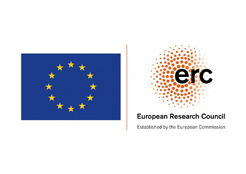Synaptic Physiology and Plasticity
Neurons generate electrical signals to rapidly transmit and process information. Networks of neurons communicate via fast chemical synapses, where an active presynaptic neuron releases neurotransmitter molecules that are sensed by the postsynaptic cell, which in turn regenerates, integrates, and propagates the signal. In response to experience, the strength of a synapse can undergo long-term plastic changes, which underlie the processes of learning and memory. The ‘Synaptic Physiology and Plasticity’ group seeks to understand fundamental principles of synaptic transmission in neurons and synaptic plasticity at the level of single synapses. We use electrophysiological recordings and 2-photon imaging and uncaging to understand how certain patterns of neuronal activity lead to long-lasting changes in synaptic strength.
Selected recent publications:
Sun W, Wong JM, Gray JA, Carter BC (2018). “Incomplete block of NMDA receptors by intracellular MK-801.” Neuropharmacology 143: 122-129.
Carter BC and Jahr CE (2016). “Postsynaptic, not presynaptic NMDA receptors are required for spike timing dependent LTD induction.” Nat Neurosci. 19: 1218-1224.
Carter BC, Giessel AJ, Sabatini BL, Bean BP (2012). “Transient sodium current at subthreshold voltages: activation by EPSP waveforms.” Neuron 75(6): 1081-1093.
Carter BC and Bean BP (2011). “Incomplete inactivation and rapid recovery of voltage-dependent sodium channels during high-frequency firing in cerebellar Purkinje neurons.” J Neurophysiol. 105(2): 860-871.
Carter BC and Bean BP (2009). “Sodium entry during action potentials of mammalian neurons: incomplete inactivation and reduced metabolic efficiency in fast-spiking neurons.” Neuron 64(6): 898-909.
The NovelNMDA Project (Novel NMDA receptor signaling in cortical synaptic
depression) has received funding from the European Research Council (ERC) under the European Union’s Horizon 2020 research and innovation programme (grant agreement No 802354).


